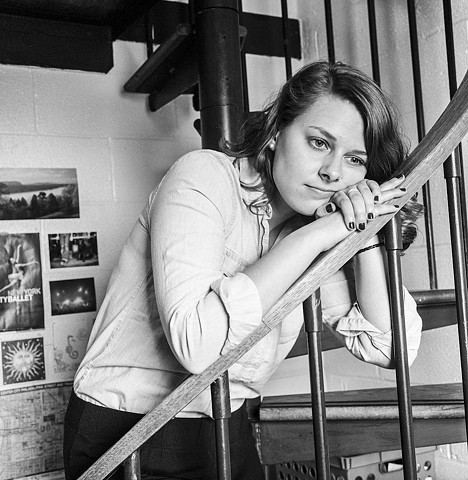Qinrui Hua

A Part of Me, A(part) from You
May 9th – May 17th, 2015
Reception: Monday, May 11, 7 – 9 PM
Why do most great pictures look uncontrived? Why do photographers bother with the deception, especially since it so often requires the hardest work of all? The answer is, I think, that the deception is necessary if the goal of art is to be reached: only pictures that look as if they had been easily made can convincingly suggest that Beauty is commonplace. – Robert Adams, Beauty in Photography
A Part of Me, A(part) from You, begun in 2013, takes as its source of inspiration the physical and psychological status of undergraduate students, who are graduating in 2015 from Fordham University in New York. As one of the graduates myself, I photographed more than 60 students in their living spaces over the span of a year and a half. I employ photography as a reflective medium capable of capturing subtle details in the sitters’ gestures and expressions, which show the transition from adolescence to adulthood. I titled the photographs with the sitter’s Fordham ID numbers not only to emphasize a shared identity of students on the verge of graduation, but also to echo to the gallery space, which is part of the university.
I started the project with an initial interest in exploring the shared anxiety experienced by upcoming college graduates as they enter the “real world.” The body of work is in the tradition of making portraits in the sitters’ homes to make them feel more comfortable, which was inspired by August Sander, Henri Cartier-Bresson, Diane Arbus, and Judith Joy Ross. I carried a 6*6 film camera to photograph Fordham seniors in their bedrooms, sitting rooms, bathrooms, kitchens, and balconies from the East Village to 188th Street in New York City. As the project developed, I gradually realized that the key to making a portrait is the way in which one collaborates with the sitters. Perhaps the most challenging aspect of the project is balancing the relationship between the photographer, who easily takes more control, and the sitter, who relinquishes control to the photographer. Each individual case requires its own appropriate method: for some sitters, the photographer needs to keep up a conversation; for others, silence works much more effectively; there are a few where praise encourages confidence, but this same strategy can evoke a sense of awkwardness with others.
The 15 prints are gelatin silver prints, which describes the luminous quality of light in a photograph the most effectively. The light in each photograph contributes to tensions that highlight the subject’s expressions. The compositions are straightforward with the subjects often placed in the center of the square frame. Ultimately, I intended to make portraits that are familiar, recognizable, but convey that enigmatic sense of commonplace, photographic beauty that Adams describes so well.
Many thanks to my mentors and peers for encouraging and supporting me all along. Special thanks go to all my sitters for their time and patience. Finally, I dedicate this show to my grandmother, and wish god bless her.
For all inquiries, please contact: Qinrui Hua at qhua@fordham.edu